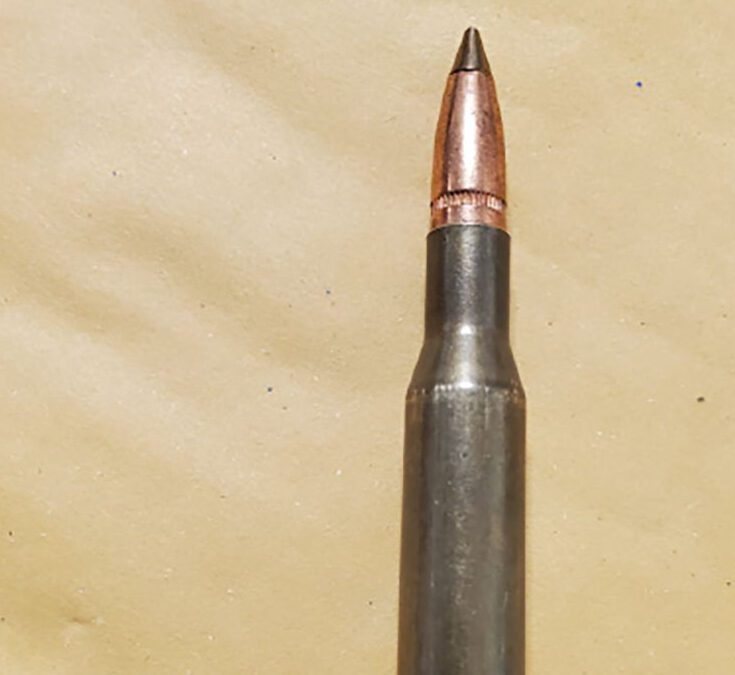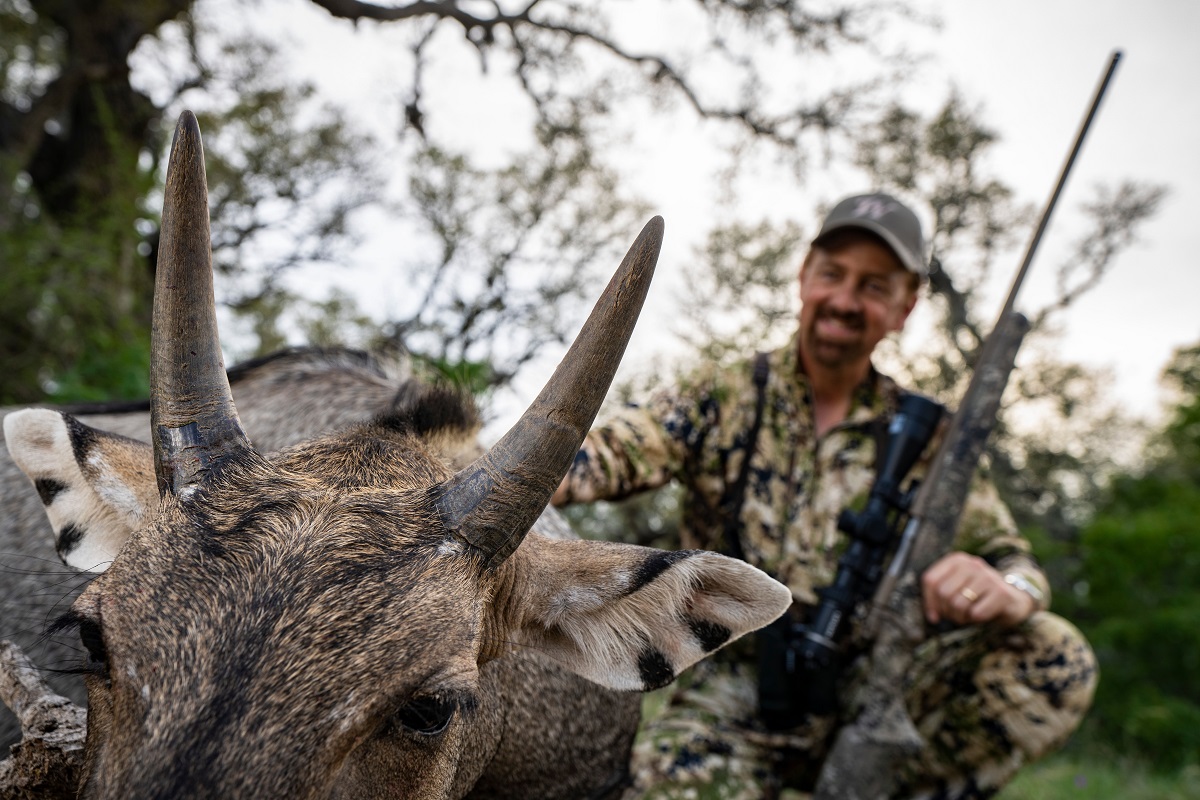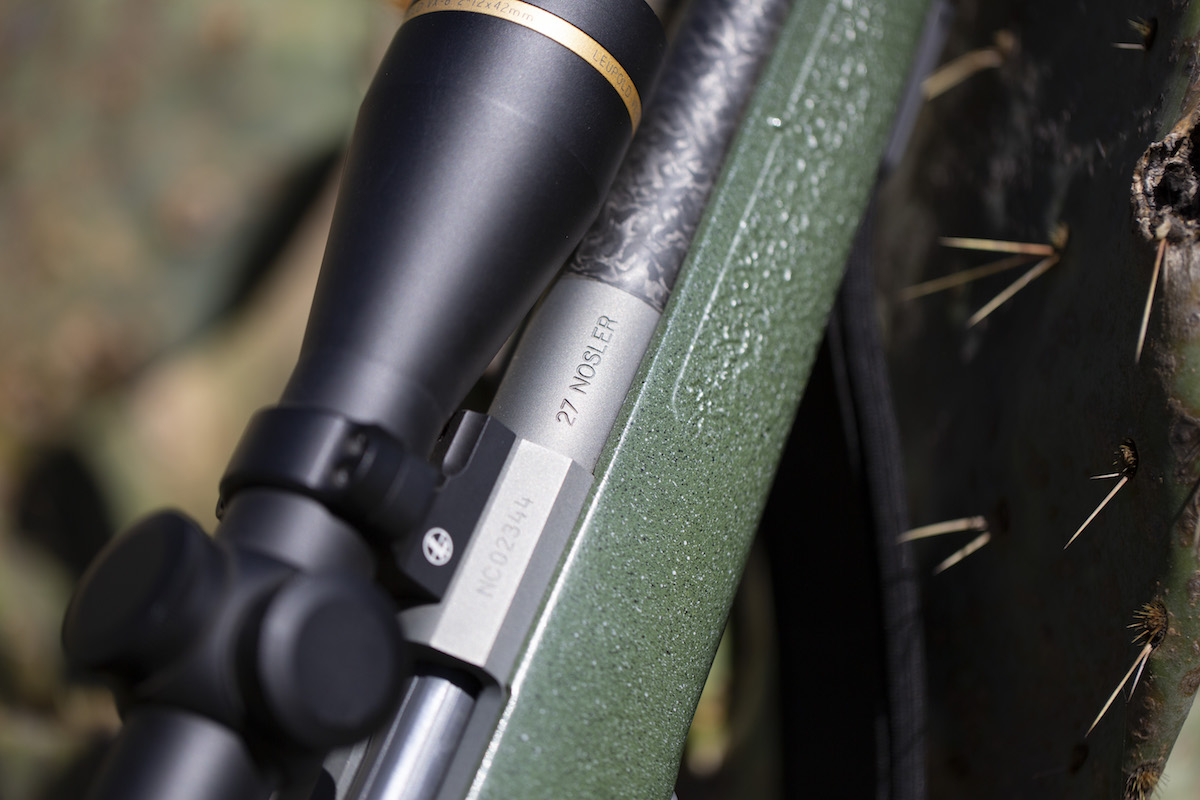I opened the ancient brown paper bag and poured a few bullets into my hand, looking to see what I was going to be working with. I couldn’t believe my eyes for a moment…
I was holding a bullet that I had read about for over 30 years, one that I had never thought to see, much less possess. I was holding a 130 gr. Remington Bronze Point in .270. I was holding Jack O’Connor’s bullet in Jack O’Connor’s caliber.
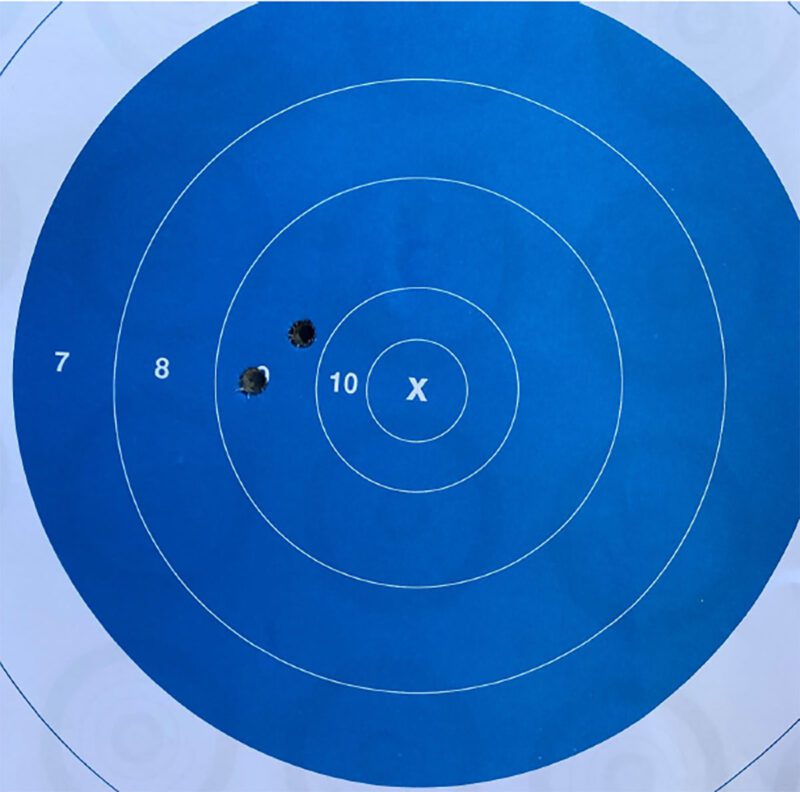 I have been a handloader since 1995. In the last few years, I have loaded for some close friends caught by the ammo shortage. A friend of my good buddy Ken asked me to load some .270 rounds for him — he had all the components, but no one in that family had handloaded in decades. I said sure, and Ken had dropped off the components a few days earlier. This was an opportunity not to be missed, and we worked a deal where I would keep some bullets for my use in return for building his handloads. You see, thanks to O’Connor’s influence, I had a Model 70 Winchester of that period, chambered in .270, and stocked by my dad to O’Connor’s specifications. The symmetry was perfect.
I have been a handloader since 1995. In the last few years, I have loaded for some close friends caught by the ammo shortage. A friend of my good buddy Ken asked me to load some .270 rounds for him — he had all the components, but no one in that family had handloaded in decades. I said sure, and Ken had dropped off the components a few days earlier. This was an opportunity not to be missed, and we worked a deal where I would keep some bullets for my use in return for building his handloads. You see, thanks to O’Connor’s influence, I had a Model 70 Winchester of that period, chambered in .270, and stocked by my dad to O’Connor’s specifications. The symmetry was perfect.
The Remington Bronze Point was an early attempt to combine accuracy with a fast-opening bullet designed primarily for light-boned game. The bronze tip prevented deformation of the bullet in the magazine under recoil, and was driven back into the main bullet upon impact to help facilitate expansion. Evidently it was expensive to manufacture, and was discontinued long before I became a hunter. I have read that it was the inspiration for the Nosler Ballistic Tip, the first of the polymer-tipped bullets offered by most manufacturers today.
Jack O’Connor was the dean of American gun writers for almost 40 years. Most famous for the .270 and sheep hunting, he hunted a wide variety of game on three continents and had vast field experience with most rifles and cartridges of his era. He was also effective at passing on his knowledge, with close to 30 books to his credit. His writing inspired my dad, and through him, me. He wrote of his experience with various rifles and cartridges and their effectiveness, or lack thereof, on game.
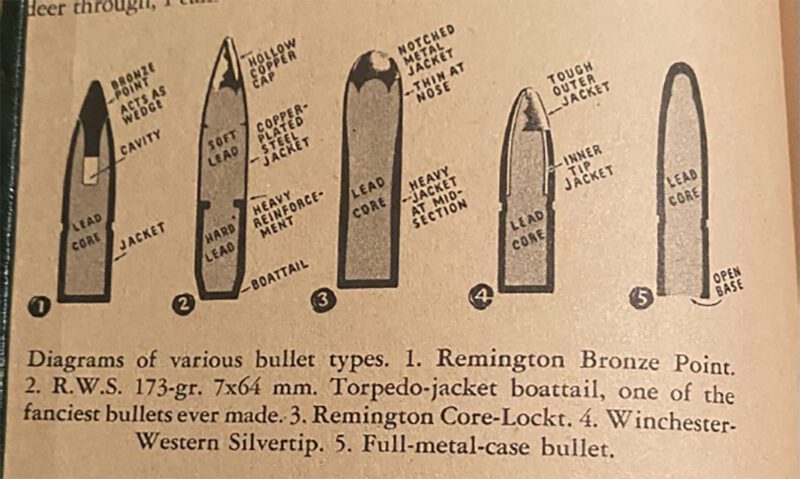
Though he used many bullets over his career, one of his favorites was the Remington Bronze Point, and when it was discontinued, he bemoaned its demise. Though it was designed for expansion over deep penetration, O’Connor used it in various calibers on a wide variety of game, up to grizzly, elk and even moose. I chose the 130 gr. for my dad’s .270 because that is what O’Connor used, and I have never been sorry.
The Nosler BT is my favorite bullet for Texas whitetails and pronghorn, and with the pig invasion in Texas, I have used both the Nosler Partition and the Barnes polymer-tipped TSX as combination bullets for deer and pigs with excellent results. My load data is the same for all three bullets, so I decided to try the same load for the RBP. I loaded seven as a part of the project. I shot two at the range to check for accuracy and point of impact; both were as I had hoped. That settled which rifle I would be using this deer season. Now I needed field experience.
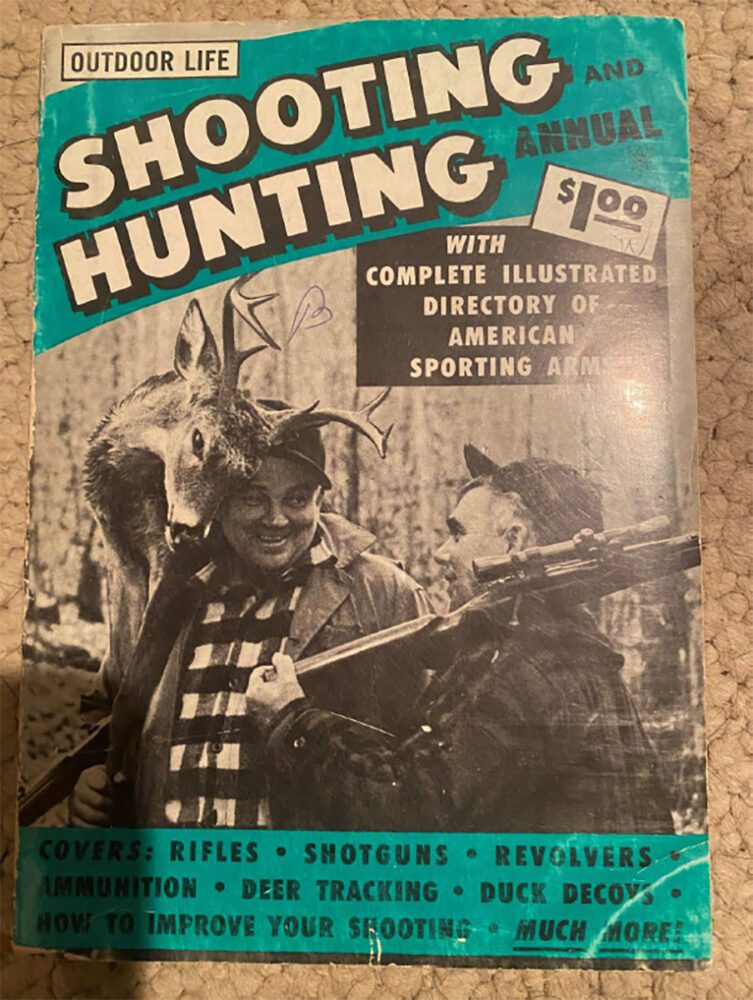 My first opportunity to fire the bullet was, not surprisingly, on a pig. They have taken over down here in Texas, and you often see more of them than you do deer. O’Connor did not have numerous pigs upon which to test the Bronze Point, but as he used the Bronze Point almost exclusively for most of a decade, I am sure he would have used it on pigs as well.
My first opportunity to fire the bullet was, not surprisingly, on a pig. They have taken over down here in Texas, and you often see more of them than you do deer. O’Connor did not have numerous pigs upon which to test the Bronze Point, but as he used the Bronze Point almost exclusively for most of a decade, I am sure he would have used it on pigs as well.
A 150-pound boar stepped out at dusk and presented a broadside opportunity at 90 yards. Due to the relatively light construction of the RBP, I shot behind the shoulder instead of trying to break it as I do with heavier cartridge and bullet combinations, as I hate tracking pigs at last light. The pig jumped at the shot and ran rapidly but unsteadily toward deep brush, 50 yards away. He made it out of sight, but I heard him go down hard. He had almost made the brush, piling up right at the edge. All I had to do was walk up to him. Now that is an easy tracking job. As the shot was through the ribs, the bullet exited. Though one shot on big game is hardly definitive, the Bronze Point performed excellently.
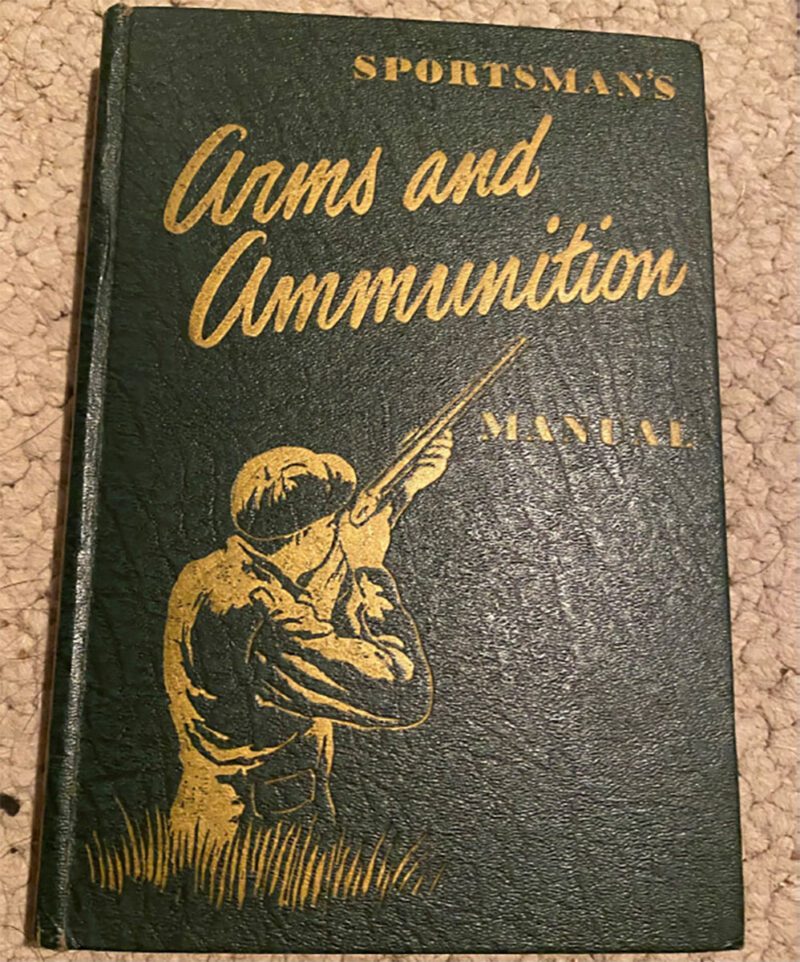 The second animal taken was, to my surprise and joy, a coyote. A coyote as a target is not much of an opportunity in my experience. Smaller than big game, they are wary, seemingly always too close or too far — and always in motion. But every once in a while you get a good, yet brief, opportunity at a quality attempt.
The second animal taken was, to my surprise and joy, a coyote. A coyote as a target is not much of an opportunity in my experience. Smaller than big game, they are wary, seemingly always too close or too far — and always in motion. But every once in a while you get a good, yet brief, opportunity at a quality attempt.
The coyote trotted into view with enough time for me to get on the rifle, and stopped briefly on the edge of a ranch road at what turned out to be 190 yards. With the glare from the recently risen sun still in my eyes, I fired as soon as the crosshairs settled on his chest. I lost him in the recoil and the tall grass, but saw what looked to be his front paws extending into the road. The Bronze point had flown true and dropped him in his tracks. The .270 entrance produced a 2 inch exit wound. Again, excellent performance. Jack O’Connor advocated hunting coyotes with big game rifles to hone one’s shooting skills, particularly for shots at running game. I was pleased and proud to have followed his lead, using his bullet.
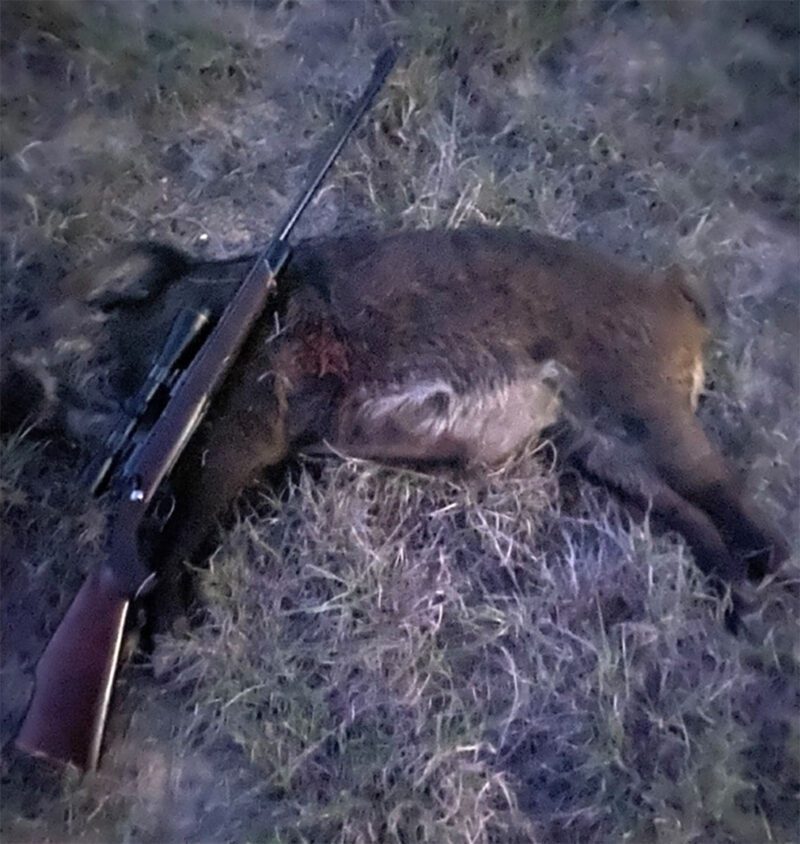 That success left one just one more trial: deer. I snuck into my makeshift ground blind well before shooting light, trying hard to be quiet, and was rewarded with seeing a shape I knew to be a deer. Was it a legal deer — and if so, the right legal deer? I had already passed on two opportunities at legal two year old bucks. I will admit, because I wanted to use O’Connor’s bullet, it was hard.
That success left one just one more trial: deer. I snuck into my makeshift ground blind well before shooting light, trying hard to be quiet, and was rewarded with seeing a shape I knew to be a deer. Was it a legal deer — and if so, the right legal deer? I had already passed on two opportunities at legal two year old bucks. I will admit, because I wanted to use O’Connor’s bullet, it was hard.
As the darkness slowly gave way, I first thought it to be a big doe, then saw it was a high spike, the exact deer we were trying to remove from the herd. Up came Dad’s rifle. It seemed to take forever for the spike to present a decent angle in the open as it slowly wandered through the copse of trees eating newly-fallen acorns. It finally stopped in the clear, sharply quartering toward me, only 60 yards away. At the shot, he was hurled to the ground and never moved. He was mine, and Dad’s and Jack O’Connor’s all at the same time. I took some time to soak it all in. Three shots fired in the field, three different species, three animals down. I had two loaded rounds left. I decided I would continue hunting with O’Connor’s bullet, both for joy and for data, and maybe some meat.
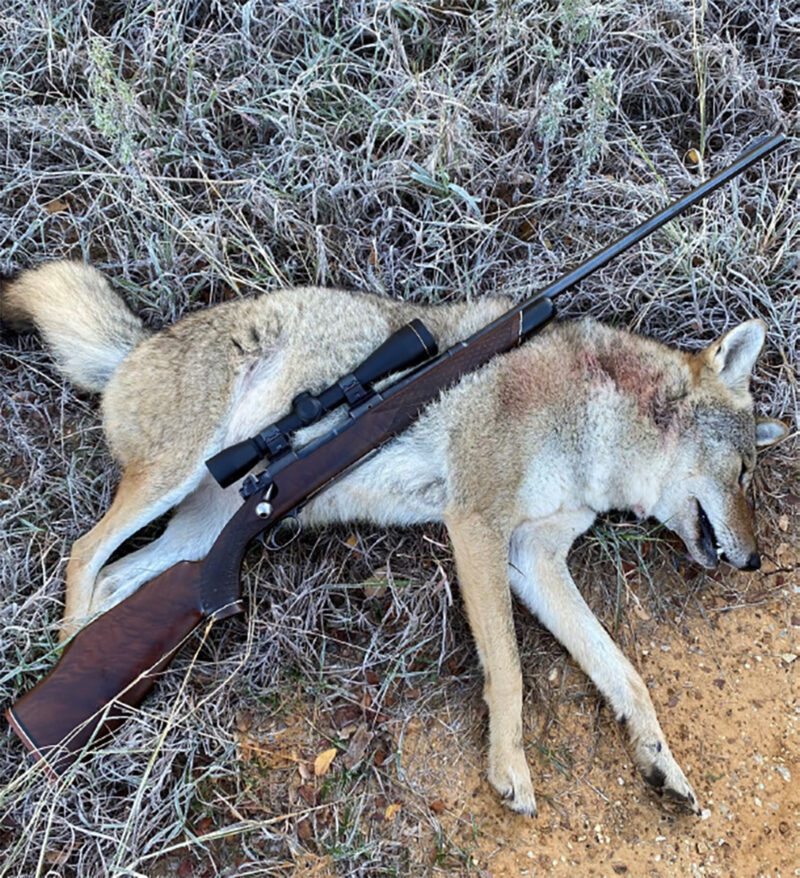 I chose the blind based on cloud cover. I had taken deer, pigs and coyotes on that tripod in the past, and it is the perfect afternoon location, but the morning sun can be blinding for 20-30 minutes just after sunrise. I was hoping for a pig or coyote, I shoot every one of each species I can, or a fat doe. I had already passed on two more legal bucks, each a nice three year old, as I am past taking another such buck with the rifle. Seeing a monster buck on my place is highly unlikely, and does are great eating.
I chose the blind based on cloud cover. I had taken deer, pigs and coyotes on that tripod in the past, and it is the perfect afternoon location, but the morning sun can be blinding for 20-30 minutes just after sunrise. I was hoping for a pig or coyote, I shoot every one of each species I can, or a fat doe. I had already passed on two more legal bucks, each a nice three year old, as I am past taking another such buck with the rifle. Seeing a monster buck on my place is highly unlikely, and does are great eating.
I had been on stand for an hour and a half when I caught movement to my left. It was a medium doe only 40 yards away. As I quietly and carefully brought the rifle into position, she wandered into brush. I prepared to wait out a suitable presentation. Then I saw more movement and a mature doe came into view. It stopped briefly, only 50 yards away, broadside. I did not hesitate, aiming carefully for her near shoulder. She staggered at the shot and collapsed within 15 yards. Four shots, four animals, proving the Remington Bronze Point was an accurate bullet, with devastating results on each animal taken, at ranges from 50-190 yards. I can see why Jack O’Connor liked this bullet.
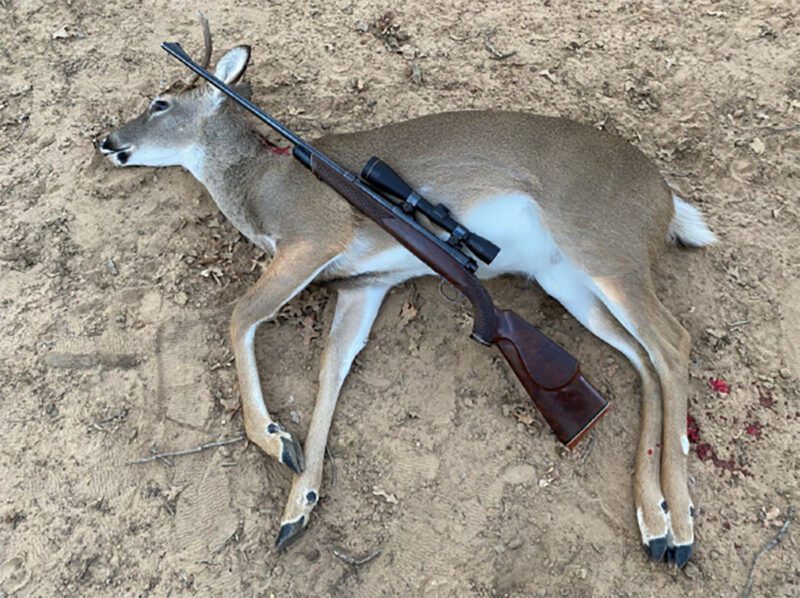 Finn Aagaard was a prominent writer for NRA’s American Hunter as I became serious about hunting and shooting in the mid-80’s. He was a tremendous influence on my development as a hunter and marksman. He strongly recommended an autopsy of each animal taken to determine exactly where the bullet went, and what the bullet did.
Finn Aagaard was a prominent writer for NRA’s American Hunter as I became serious about hunting and shooting in the mid-80’s. He was a tremendous influence on my development as a hunter and marksman. He strongly recommended an autopsy of each animal taken to determine exactly where the bullet went, and what the bullet did.
My modification of his rule is that I autopsy any animal that l field dress, which usually means deer. I just remove the backstraps from feral hogs I take. With the spike, the shot was a little high, but still entered the chest cavity inside the shoulder and below the spine as intended. The Remington Bronze Point destroyed both lungs length-wise and wrecked all the plumbing above the heart. It was impressive. Due to the angle, velocity and construction, the bullet did not exit, even on a 2-year-old Texas whitetail. This performance is very similar to what I would expect from, and have experienced with, the Nosler Ballistic Tip.
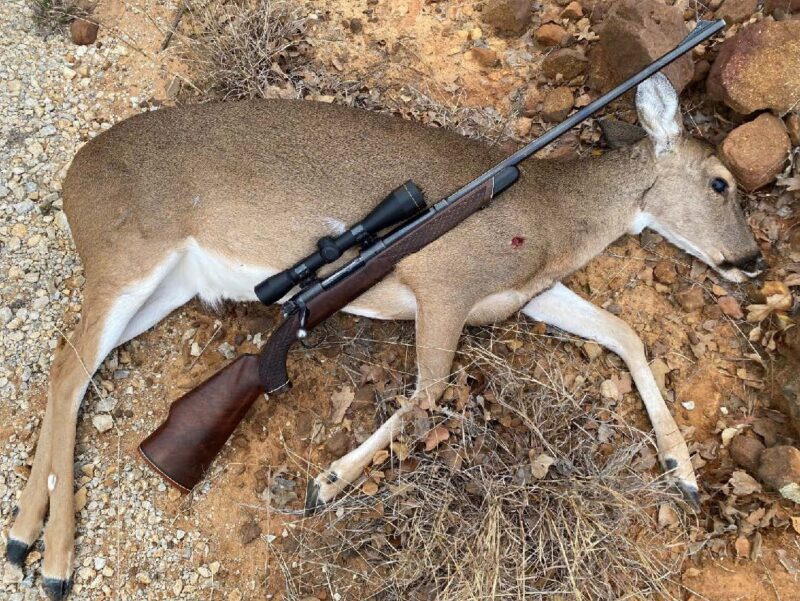 With the doe, the Bronze Point shattered both shoulders, and in between wrecked one lung and damaged the other, and destroyed the major blood vessels just above the heart. Impressive performance indeed, but I was surprised to find only a small exit wound. Evidently the bullet had shed virtually all of it’s weight inside the body, and only a small part, perhaps the bronze tip, had exited.
With the doe, the Bronze Point shattered both shoulders, and in between wrecked one lung and damaged the other, and destroyed the major blood vessels just above the heart. Impressive performance indeed, but I was surprised to find only a small exit wound. Evidently the bullet had shed virtually all of it’s weight inside the body, and only a small part, perhaps the bronze tip, had exited.
Jack O’Connor wrote that, in his experience, the bronze tip seemed to penetrate more deeply than the rest of the bullet, often finding them under the skin on the far side of animals. This is further evidence that the Remington Bronze Point was a “soft” bullet, penetrating fine but expanding quickly once inside the animal. I believe the Remington Bronze Point was an excellent bullet for medium sized game such as pronghorn and deer of all sizes, as well as animals up to caribou. However, I do not think I would choose it for larger, more heavily-boned animals such as elk and moose as Jack O’Connor did.
As one who has grown to appreciate, not just the joy of hunting and the satisfaction of handloading, but also the allure of classic rifles and cartridges, being able to hunt using Jack O’Connor’s bullet in his caliber, in Dad’s version of his rifle, has added an additional, special experience to my hunting, one that I will cherish forever.
It simply does not get better than this.
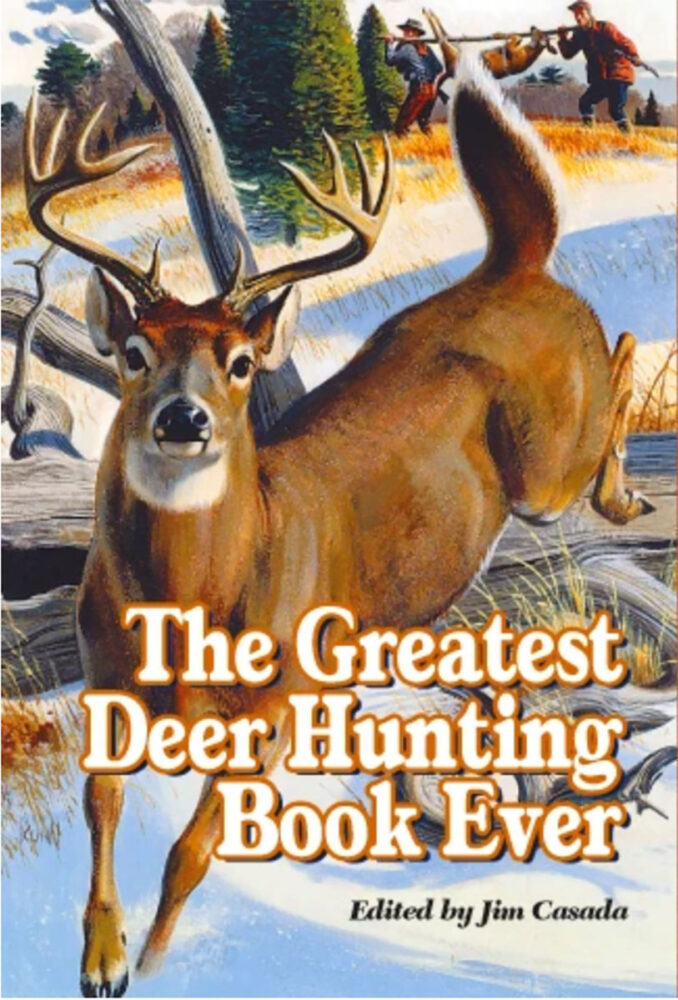 On these pages is a stellar lineup featuring some of the greatest names in American sporting letters. There’s Nobel and Pulitzer prize-winning William Faulkner, the incomparable Robert Ruark in company with his “Old Man,” Archibald Rutledge, perhaps our most prolific teller of whitetail tales, genial Gene Hill, legendary Jack O’Connor, Gordon MacQuarrie and many others. Buy Now
On these pages is a stellar lineup featuring some of the greatest names in American sporting letters. There’s Nobel and Pulitzer prize-winning William Faulkner, the incomparable Robert Ruark in company with his “Old Man,” Archibald Rutledge, perhaps our most prolific teller of whitetail tales, genial Gene Hill, legendary Jack O’Connor, Gordon MacQuarrie and many others. Buy Now

